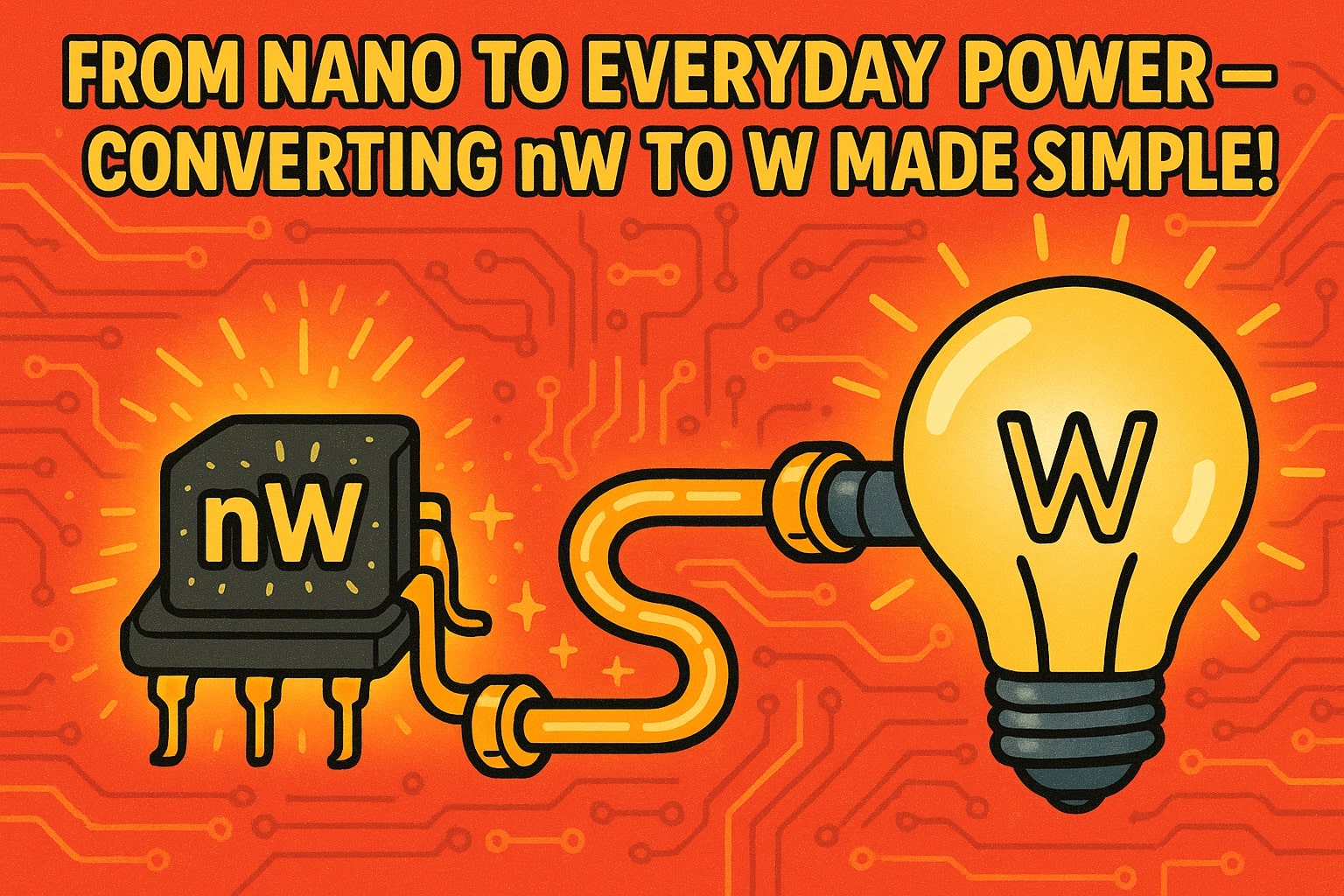Nanowatt to Watt – How to convert nW to W
Need to convert nanowatt to watt? These two power units measure energy at completely different scales. Nanowatts describe almost unimaginably tiny levels of power, often in scientific experiments or ultra-low-power electronics, while watts are the everyday standard for devices, appliances, and energy systems. Despite the massive gap, the conversion is easy because both are metric. Here’s how to do the math, where these units are used, and why nanowatt-level measurements matter more than you might expect.

What is a nanowatt (nW)?
A nanowatt is an incredibly small unit of power, equal to one-billionth of a watt (1 × 10⁻⁹ W). It’s used in fields like nanotechnology, advanced sensor research, and ultra-low-power circuits where devices must function on minuscule amounts of energy.
For example, some experimental microchips for biomedical implants or environmental sensors can operate on power levels measured in nanowatts, harvesting energy from body heat, vibrations, or ambient radio waves.
What is a watt (W)?
A watt is the SI unit for power, equal to one joule per second. It’s used everywhere, from measuring the brightness of a lightbulb to the output of solar panels and the capacity of home appliances.
Most devices we interact with daily — like a smartphone charger (5–20 W) or a laptop (45–90 W) — are millions or even billions of times more powerful than the nanowatt levels used in advanced microdevices.
How to convert nanowatt to watt
Since these units are tied directly by the metric scale, the conversion is straightforward:
1 nanowatt = 1 × 10⁻⁹ watts (0.000000001 W)
To convert:
Watts (W) = Nanowatts (nW) × (1 × 10⁻⁹)
Example: A research sensor uses 50,000,000 nW of power:
50,000,000 × 1 × 10⁻⁹ = 0.05 W
Need a quick answer? Use our Power Converter or explore other Conversion tools for instant, precise results.
Did you know?
-
Brain-inspired electronics: Some neuromorphic computing chips mimic brain activity while using only tens of nanowatts per neuron, making them ultra-efficient for AI research.
-
Biomedical innovation: Researchers have built implantable glucose sensors that function at 500 nW, harvesting energy directly from chemical reactions in the body.
-
Space tech: Certain deep-space instruments, like those aboard Voyager 1, run on power budgets where components consume just nanowatts, preserving energy from dwindling radioisotope generators.
-
Energy harvesting: Cutting-edge Internet of Things (IoT) devices capture ambient energy — like light or radio waves — often at rates under 1 µW (1,000 nW), to operate without batteries.
When Nanowatt Measurements Enabled Self-Powered Devices
In 2020, scientists at the University of Colorado Boulder unveiled a wearable electronic patch that could convert body heat into electricity. The device generated only 200 nW per square centimeter, but that energy was enough to power a low-power temperature sensor and wireless transmitter without any battery.
By converting these power levels into watts (0.0000002 W per cm²) for broader testing, engineers could integrate the device into consumer prototypes. This breakthrough highlighted how working with nanowatt scales can lead to practical, battery-free technologies for health monitoring and smart wearables.

Scaling from the Tiny to the Tangible
Converting nanowatt to watt is simply multiplying by 1 × 10⁻⁹, but the real takeaway is how these scales connect. Nanowatts measure power in advanced, experimental devices, while watts bridge the gap to familiar technology. Understanding the relationship helps engineers, scientists, and innovators turn cutting-edge prototypes into functional products.
For quick and reliable calculations, use our Power Converter or check other Conversion tools to simplify any power conversion, no matter how small or large.

